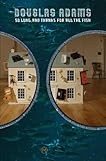Moroccan Rugs: A Brief History
Let's talk carpets - specifically, Moroccan rugs. These colorful rugs, so popular in the 20th and 21st centuries, have a venerable history. They have been made by nomadic tribes and Berbers from Morocco and other parts of North Africa from earliest times and if you know what you're looking for, you can see the whole history of the region in the various patterns that are available. Some rugs feature Jewish influences from the time of King Solomon. Some have Arab influences, from the time when the Moors swept across Europe to create a great empire. Still others bear the hallmarks of the Ottoman Empire. However, most of the rugs that are prized today are less than 300 years old.
 |
| Photo Credit |
Moroccan Rug Types
If you're looking for the perfect Moroccan rug to accompany your dark brown leather couch, then it's helpful to know something about the different types of rugs available. The description 'Moroccan rugs' doesn't really do justice to the variety of origins and styles. Some of the most recognizable rugs are those made by the Beni Ourain people who lived in the Atlas Mountains. These are shaggy rugs, with abstract geometric patterns set against a pale background. Kilims and mixed-weaving rugs are also available from the Atlas area. In contrast Berber rugs are tufted with a loop pile weave. The name actually refers to the style of weaving, rather than the style of carpet. These carpets often have areas of dark color on a lighter background. While Berber carpets were originally made from natural materials, these days the can be made from wool, nylon and Olefin fiber.
Rugs for Your Home
Moroccan rugs are all unique, because they are still woven by hand and they make the perfect accent for any home. A traditional Beni Ourain rug made of wool and with a simple pattern woven in, will fit into any home. These ancient pieces still manage to have an ultra-modern look, and it's hard to find a room they won't improve. (As a plus, if your heating ever goes out, you can use them for their original purpose, as blankets to keep you warm.)
When you're buying Moroccan rugs, sometimes the size can give you a clue to their age. Antique rugs, which were made to be portable, are smaller than modern rugs, coming in at about 7 feet wide. Modern rugs can be much wider.
Collectible Rugs
As well as being used for your floor, Moroccan rugs also make great wall hangings. In fact, some people collect antique rugs for that purpose. It's another way to add some pizzazz to a room, and make a talking point for your friends.
And why not go all the way and visit Morocco to check out how the rugs are made. You'll get a kick out of seeing the large looms and the care with which weavers blend the materials - and will have a heck of a story to tell your friends.
Article provided at no cost by Lee Mason. When he isn't busy rennovating his newly bought house or writing about interior design, you'll find him chilling out on his dark brown leather couch.




























































No comments:
Post a Comment
Please leave us some love...and have yourself a groovy day~!! Peaces...xoxo